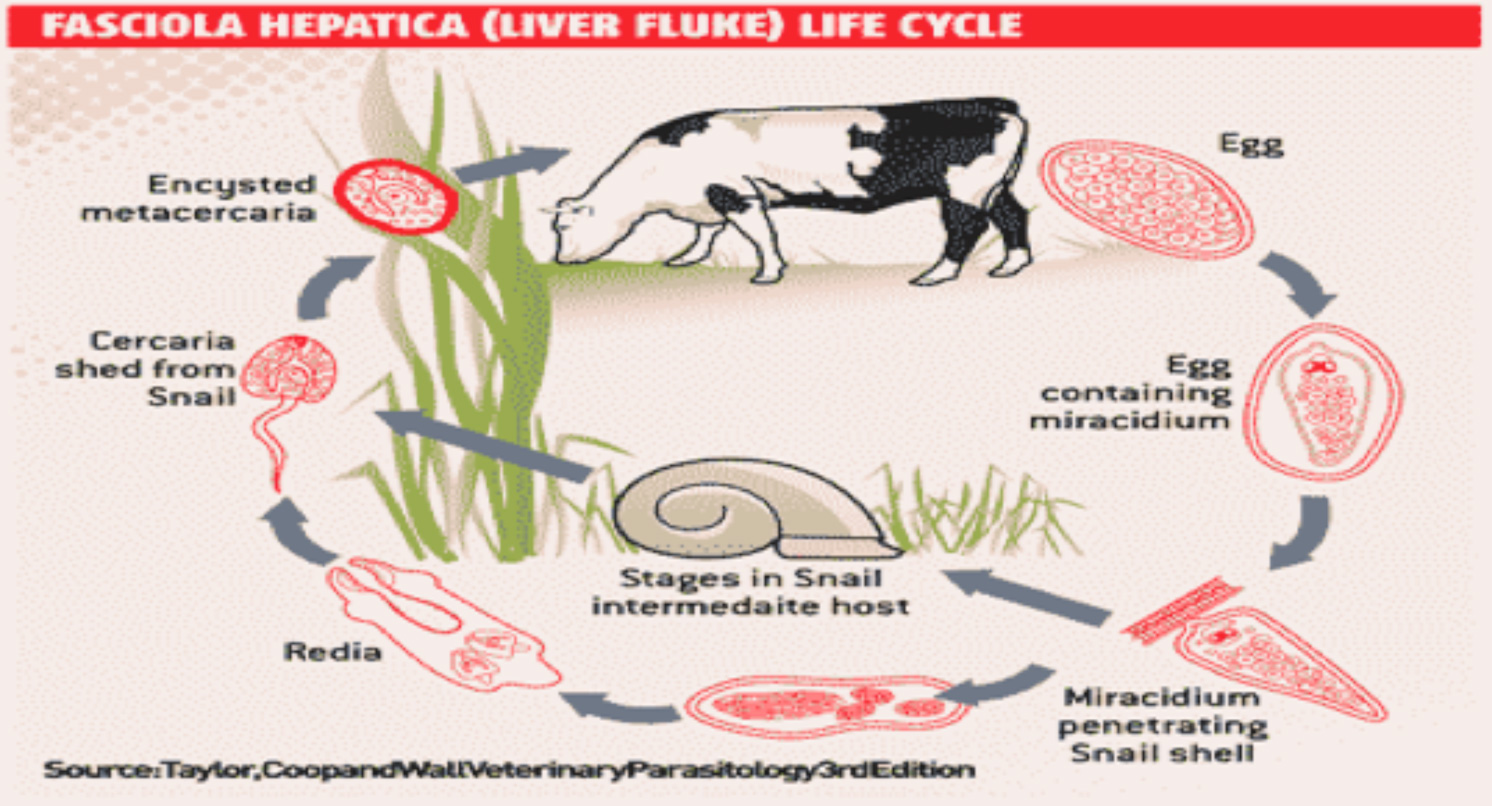Housing gives farmers a great opportunity to deal with both internal and external parasites that could be effecting the stock on their farm. This time of year the main parasites that should be causing concern for farmers would be both stomach (Ostertagia ostertagi) and lung (Dictyocaulus viviparous) worms and liver fluke. There are other parasitic diseases to be concerned with but the above two is the most common for this time of year. With the wet back end to the year and the relatively mild last winter the conditions have been ideal for the development of liver fluke. Farmers should keep this in mind when it comes to dosing now at housing and even farmers in dryer parts of the country who in normal years are not effected by liver fluke should consider implementing a dosing plan. It is clear to see from the results coming back from the abattoirs that the instances of liver fluke being present in Ireland is constantly on the rise.
 Unlike the life cycle of worm infections liver fluke parasite involves a mud snail as an intermediate host and several free-living stages. The role of the snail, which prefers muddy, slightly acidic conditions, means the incidences of liver fluke is greater in wetter areas of the country. This is why it’s of concern this year as the last few months have been relatively wet which is promoting the snail’s habitat. Adult fluke lay eggs in the cow’s bile duct, which are passed out in faeces. At suitable temperatures a larva develops, hatches and actively seeks out a snail host, where it multiplies. With the snail’s capacity to produce 100,000 offspring in three months, there is potential for large numbers of parasites on the pasture. Eventually the larvae emerge from the snail on to grass, where they can be eaten by grazing cattle or sheep. Once ingested they tunnel into the liver, causing considerable damage on their way to the bile ducts. Infection is evident, by production of fluke eggs, about 10-12 weeks after ingestion and the whole cycle takes up to 20 weeks.
Unlike the life cycle of worm infections liver fluke parasite involves a mud snail as an intermediate host and several free-living stages. The role of the snail, which prefers muddy, slightly acidic conditions, means the incidences of liver fluke is greater in wetter areas of the country. This is why it’s of concern this year as the last few months have been relatively wet which is promoting the snail’s habitat. Adult fluke lay eggs in the cow’s bile duct, which are passed out in faeces. At suitable temperatures a larva develops, hatches and actively seeks out a snail host, where it multiplies. With the snail’s capacity to produce 100,000 offspring in three months, there is potential for large numbers of parasites on the pasture. Eventually the larvae emerge from the snail on to grass, where they can be eaten by grazing cattle or sheep. Once ingested they tunnel into the liver, causing considerable damage on their way to the bile ducts. Infection is evident, by production of fluke eggs, about 10-12 weeks after ingestion and the whole cycle takes up to 20 weeks.
Liver fluke affects cattle in two stages: Immature fluke migrating through the liver can cause liver damage and haemorrhage, while heavy infections of adult fluke in the bile ducts feed on blood, resulting in anaemia. Growth rates can fall by up to 20%, while milk yields can reduce by up to 8%. When it comes to threating animals for fluke it is essential that you know the dose you intent to use. To put it in simple terms there are different growth stages in the life cycle of fluke with immature and mature being the best way to describe it. Not all doses will kill all stages of fluke and the only products that will are triclabendazole doses. One mistake some farmers make at housing is using a dose that will only kill mature fluke when in reality the immature fluke will survive and develop to cause further issues down the line. If possible its good practice to put cattle in for 6 weeks before dosing for fluke to allow the fluke to develop to mature stage and then hit them with a dose that will remove fluke completely from the animal. There is a wide range of doses for threating animals for both fluke and worms available across all Drummond’s branches.
For any further information on dosing call in and chat with some our trained counter staff or your local Drummond’s representative.

